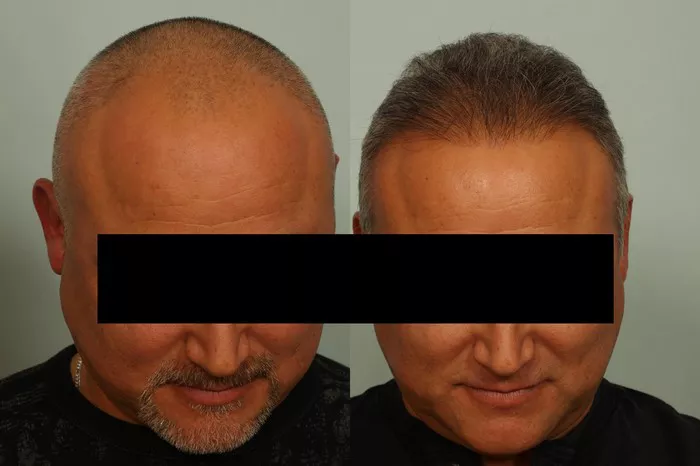Hair loss can be a source of insecurity and frustration for many individuals, impacting self-esteem and confidence. Fortunately, advances in medical technology have made hair transplants a viable solution for those seeking to restore their natural hairline. However, before embarking on this journey, it’s crucial to understand the costs associated with a minor hair transplant and the factors that influence them.
Understanding the Basics of Hair Transplants
A hair transplant is a surgical procedure that involves moving hair follicles from one part of the body, typically the back or sides of the scalp where hair is more resistant to balding, to the areas experiencing hair loss. This procedure is commonly used to treat male pattern baldness, but it can also be effective for women experiencing hair thinning or bald spots.
There are two primary techniques used in hair transplantation: follicular unit transplantation (FUT) and follicular unit extraction (FUE). FUT involves removing a strip of tissue from the donor area and dissecting it into individual follicular units, while FUE involves extracting individual follicular units directly from the donor area. Both techniques have their advantages and disadvantages, but FUE is generally preferred for minor hair transplants due to its less invasive nature and minimal scarring.
Factors Influencing the Cost of a Minor Hair Transplant
Several factors can influence the cost of a minor hair transplant, including:
1. Extent of Hair Loss: The severity of hair loss will determine the number of grafts needed to achieve the desired results. Minor hair transplants typically require fewer grafts compared to more extensive procedures.
2. Technique Used: As mentioned earlier, both FUT and FUE techniques are available for hair transplantation. FUE is typically more expensive than FUT due to the time-intensive nature of the procedure and the advanced technology required.
3. Surgeon’s Experience and Reputation: The experience and reputation of the surgeon performing the hair transplant can also impact the cost. Highly skilled and experienced surgeons may charge higher fees for their services.
4. Location: The cost of living and healthcare varies from one region to another, which can influence the overall cost of the procedure. Hair transplant clinics located in metropolitan areas or regions with higher demand may charge more for their services.
5. Clinic Facilities: The quality of the clinic facilities and amenities can also affect the cost of a minor hair transplant. Clinics with state-of-the-art equipment and luxurious accommodations may charge higher fees for their services.
6. Additional Services: Some clinics may offer additional services such as pre-operative consultations, post-operative care, and follow-up appointments as part of their package. These services may be included in the overall cost or offered as optional add-ons.
Average Cost of a Minor Hair Transplant
While the cost of a minor hair transplant can vary depending on the factors mentioned above, the average price range typically falls between $2,000 to $5,000. However, it’s essential to note that this is just an estimate, and the actual cost may be higher or lower depending on individual circumstances.
Understanding the Cost Breakdown
To better understand the cost of a minor hair transplant, it’s essential to break down the various components involved:
1. Consultation Fee: Most clinics charge a consultation fee, which covers the initial assessment and discussion of treatment options. This fee may or may not be included in the overall cost of the procedure.
2. Procedure Fee: The procedure fee covers the cost of the surgery itself, including the surgeon’s fees, clinic facilities, and equipment used during the procedure.
3. Anesthesia Fee: Anesthesia is typically administered during the procedure to ensure the patient remains comfortable and pain-free. The cost of anesthesia may be included in the overall procedure fee or charged separately.
4. Graft Fee: The number of grafts required for the transplant will significantly impact the overall cost. Grafts are typically priced per unit, with the cost varying depending on the clinic and technique used.
5. Medication and Aftercare: Patients may be prescribed medication to help manage pain and promote healing following the procedure. The cost of these medications may be included in the overall package or charged separately.
6. Follow-Up Appointments: Follow-up appointments are essential to monitor progress and address any concerns following the procedure. Some clinics may include a certain number of follow-up appointments in the overall cost, while others may charge additional fees for each visit.
Financing Options
For those concerned about the upfront cost of a minor hair transplant, several financing options may be available:
1. Payment Plans: Many clinics offer flexible payment plans that allow patients to spread out the cost of the procedure over time. These payment plans may come with low or zero-interest rates, making them an affordable option for many individuals.
2. Medical Loans: Some financial institutions offer specialized medical loans designed to cover the cost of elective procedures such as hair transplants. These loans typically have competitive interest rates and flexible repayment terms.
3. Healthcare Credit Cards: Healthcare credit cards are another option for financing medical expenses. These cards often come with promotional financing offers, such as zero-interest introductory periods, making them a convenient option for covering the cost of a minor hair transplant.
4. Insurance Coverage: In some cases, health insurance may cover a portion of the cost of a hair transplant if it is deemed medically necessary. However, elective procedures such as hair transplants are typically not covered by insurance unless they are performed for reconstructive purposes following trauma or surgery.
Conclusion
A minor hair transplant can be a life-changing procedure for those struggling with hair loss, restoring confidence and self-esteem. However, it’s essential to understand the costs involved and explore financing options to make the procedure more accessible. By doing thorough research and consulting with a qualified surgeon, individuals can make informed decisions about their hair restoration journey and achieve the desired results.


